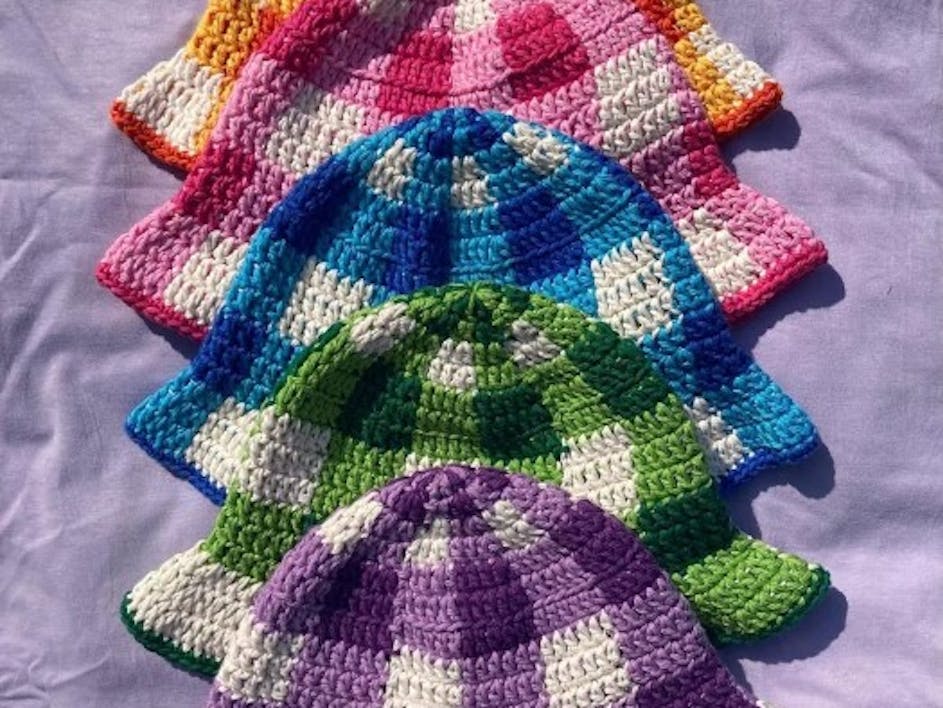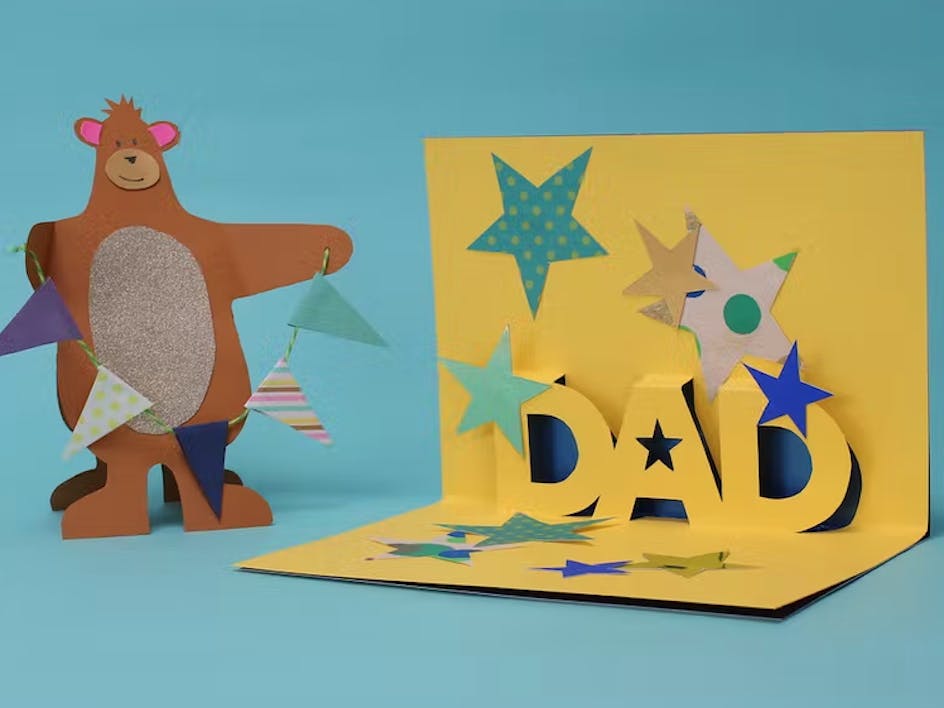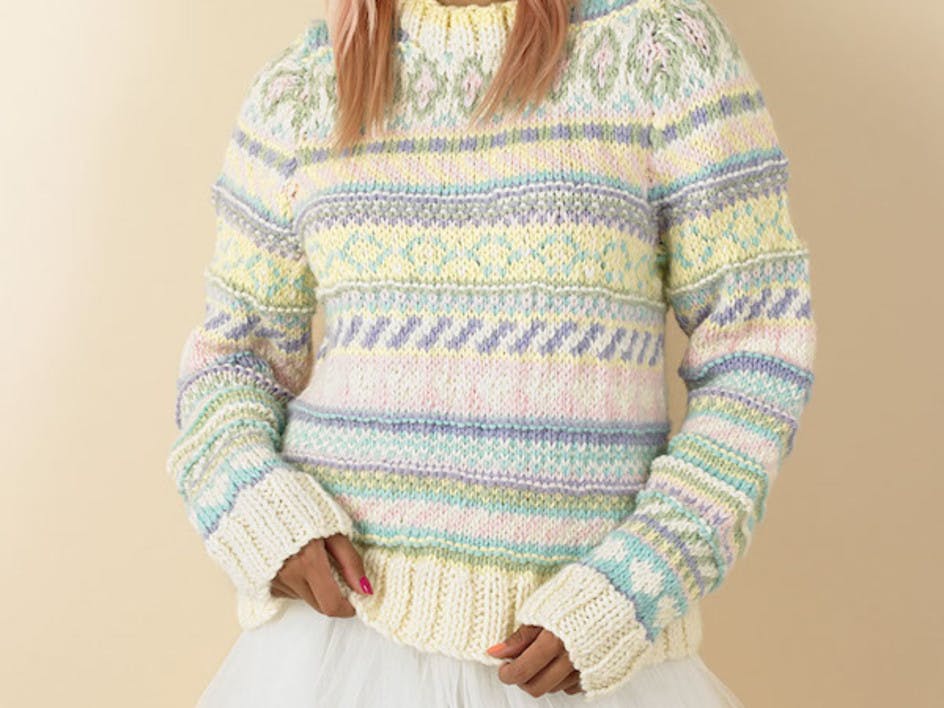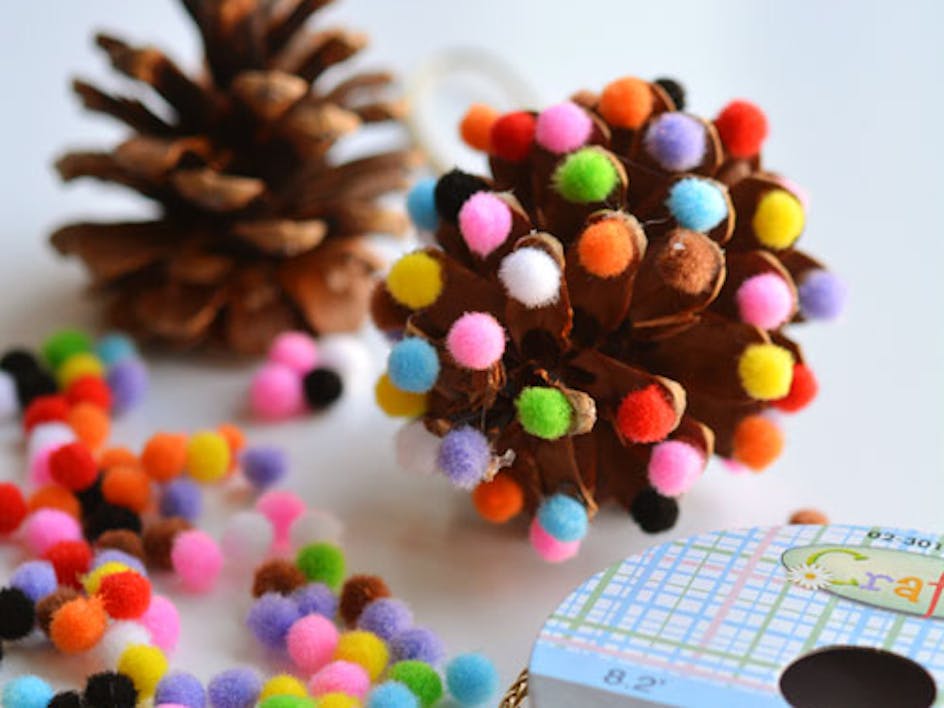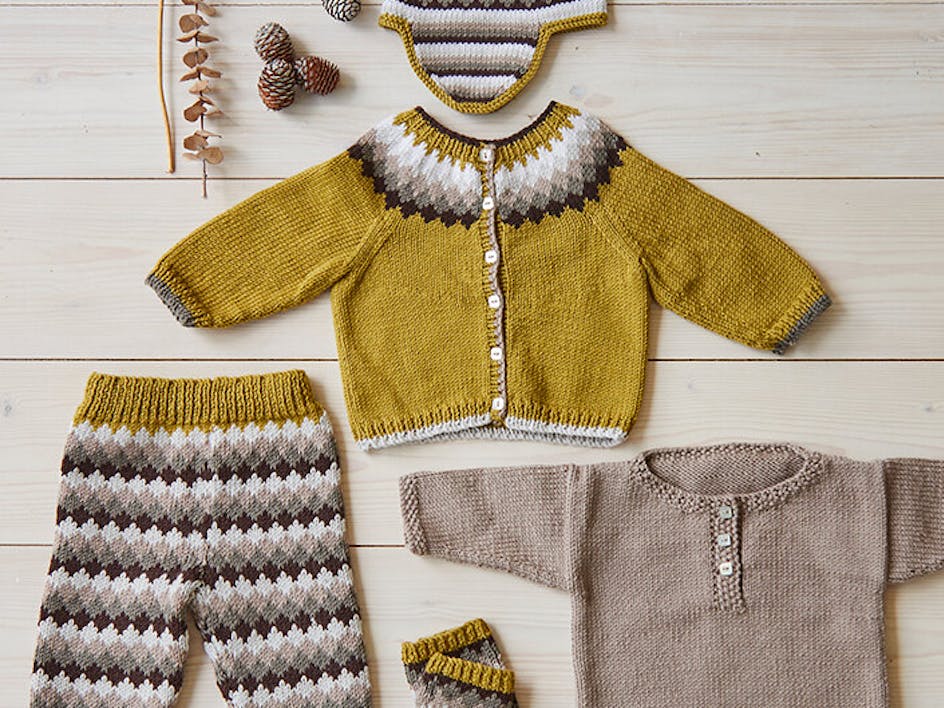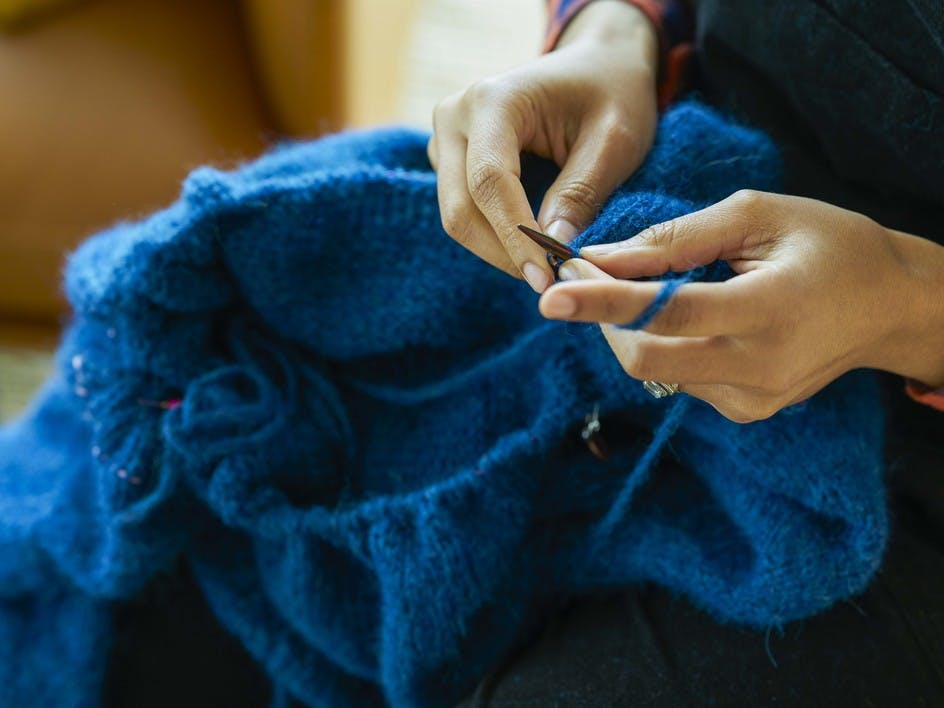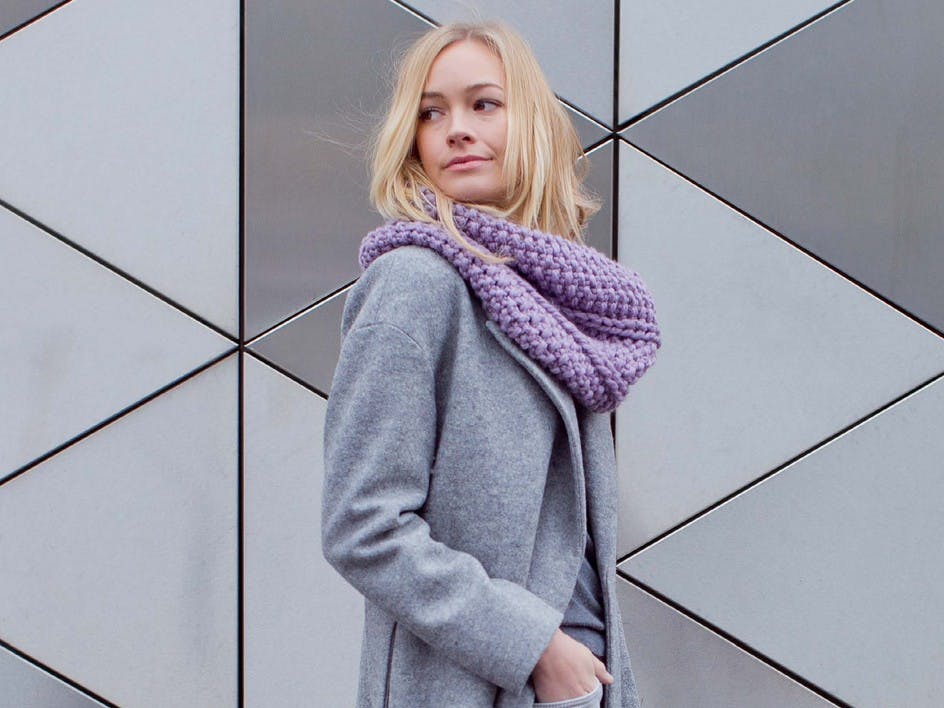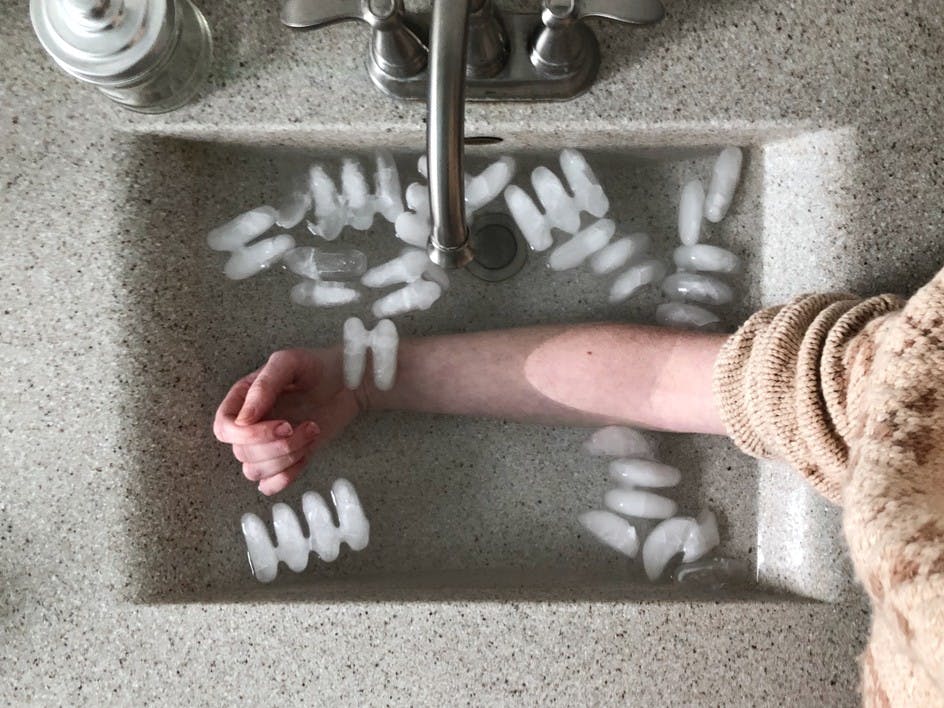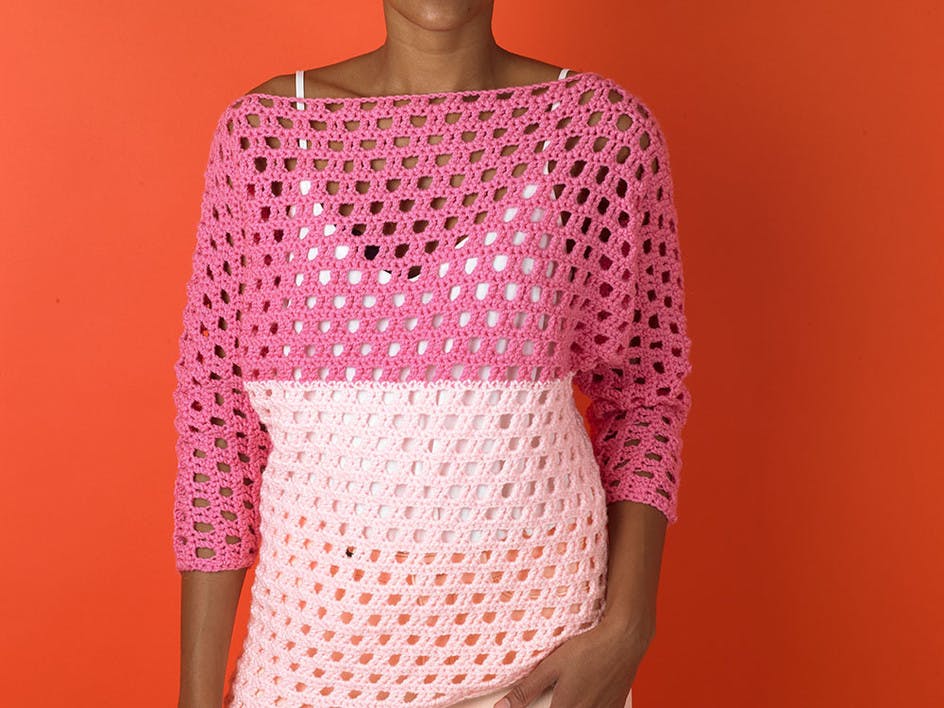The origins of the Aran sweater
Published on April 10, 2019 By Serena 5 min read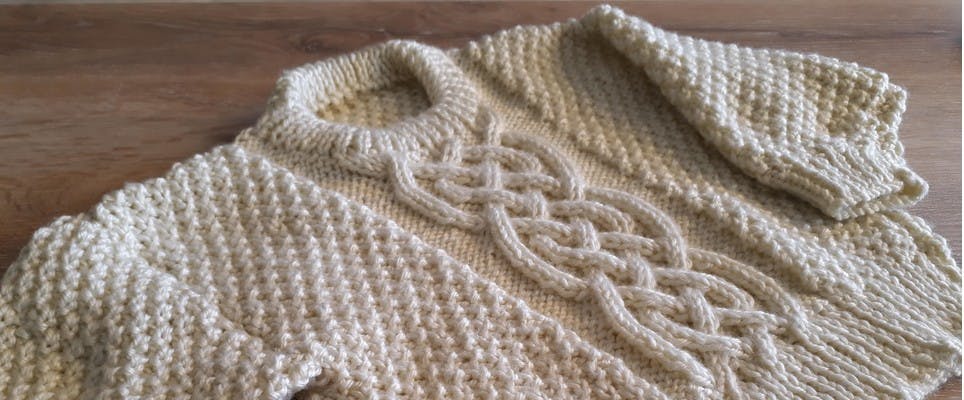
Aran sweaters are one of the most sought-after knitting patterns, but just where did these sweaters come from, and how long have they been around?
Knitters just cannot get enough of an Aran sweater pattern! The intricate cables, bobbles and stitch patterns make these garments popular for a number of reasons: they look beautiful of course, they lend thickness and warmth to the sweater, and they present a wonderfully satisfying challenge to the knitter!
In fact, Aran sweaters can be so intricate that hand-knitting is the only way to produce them; commercial knitting techniques just can’t match a hand-knitter for cable complication, so if you have ever produced one of these wonderful designs, you can feel justifiably superior!
Many feel an identity with the Aran sweater as a part of Irish ancestry: some patterns are even identified with specific clans and families.
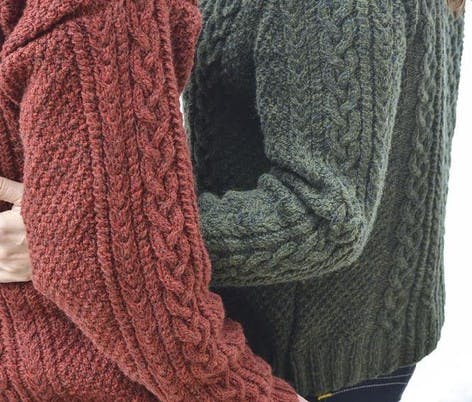
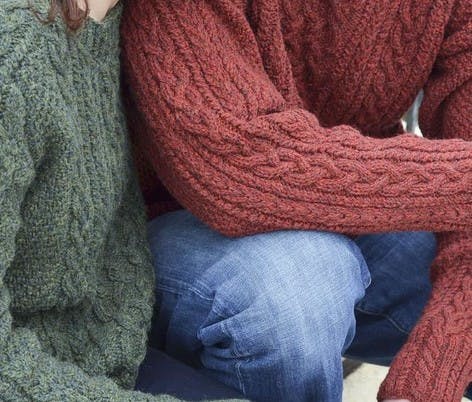
It all began with Gansey sweaters
To find the ancestor of the Aran sweater, we travel not to the windswept Aran islands of Galway Bay, but 400 miles South-East… to the Channel Islands, and Guernsey in particular. The history of knitting in Guernsey is rich: it is mentioned as early as the 15th century, and Mary Queen of Scots, on her execution in 1587, is said to have been wearing knitted stockings from Guernsey. As you would expect, much of the trade of the island, historically, relied on fishing – and fishermen had quite specific and demanding clothing requirements. The clothes they wore had to be durable and easy to repair; resist staining; allow for ease of movement; keep the wearer warm – and keep out as much water as possible! So the Guernsey (Gansey) sweater was born.
The intricate patterns were often created by alternating knit and purl stitches, rather than the cable knitting seen in Aran sweaters. Often, the motifs were aligned in vertical panels: however, the design of the Gansey sweater also encouraged a horizontal orientation.
Gorgeous Gansey-inspired patterns
The Gansey is an eminently practical garment: gussets in the neck and underarms allow the wearer free movement, as does the divided hem; the dark navy color can absorb a number of liquids without staining. The wool had the protective oils left in, was particularly tightly twisted, and the knitting is very tight: together these help the garment to repel drizzle and spray, keeping the wearer dry.
Ganseys were designed to be as durable as possible, and were often handed down through generations: they are identical front-to-back, making them reversible, and where stitch texture patterns are used, they are usually restricted to the yoke, leaving the lower body and especially the lower arms – the parts likely to experience the most wear – in plain stockinette stitch that can easily be repaired. Cuffs were tight, and usually stopped short of the wrist, to be out of the way and avoid getting wet.
The sweaters were often knit for fishermen by their wives and mothers: naturally, of course, these creative ladies soon devised ways of making their men look as good as possible! As well as the plainer ‘working’ Gansey, a ‘Sunday best’ version evolved, which could be every bit as beautiful as its Aran descendants.
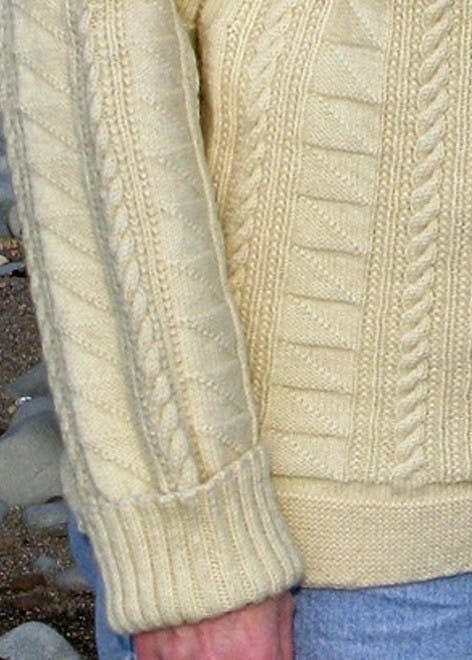
This sweater is from the Gansey Nation site, which has a wealth of tips on Gansey knitting techniques.
A Gansey sweater presents is a formidable challenge: the body is knitted in the round, and accidents are not unusual! On reaching the armhole the knitting is divided, with the rest of the front and back being worked back-and-forth. At the shoulders the front and back are grafted together, often with a raised ridge forming the shoulder strap. Stitches are picked up at the armholes to knit the sleeves from the shoulders down, usually beginning with a short ribbing section; stitches are also picked up at the neck to make the short collar.
Seam-phobic knitters will, of course, already have spotted the advantage of this technique: no sewing! But there are other practical advantages: a seamless sweater has no points of weakness; while the sleeves, being cast-off at the cuff, can easily be unraveled when repairs are necessary.
The journey of the Gansey design
Strong trade links meant that the Gansey sweaters, and the designs for making them, were swiftly exported to the rest of the British Isles in the 17th century. As the jumpers spread, local knitters incorporated their own motifs and designs, sometimes simply using shapes possible with knitted stitches, at other times taking inspiration from objects that formed a regular part of seafaring life. The twisted ‘rope’ cable design is credibly attributed to ropes on boats; anchor motifs remain popular.
As the sweaters spread north, the designs became ever more intricate, reaching their zenith in Irish and Scottish fishing islands.
The estimated time to knit a Gansey sweater – for an expert, experienced knitter – is 78 hours!"
What does all this have to do with Aran sweaters?
In Scotland and Ireland, Gansey sweaters developed the varied cables seen today: ropes, plaits, diamond lattices, and the beautiful ‘Celtic knot’ designs. The stitch patterns also grew to cover the whole sweater, like the modern aran sweater. But it was commercial interests that drove the final stage of Aran sweater evolution: Gansey sweaters, while extremely practical for a life at sea, are pretty time-consuming to produce. The estimated time to knit one – for an expert, experienced knitter – is 78 hours! Most knitters did not have a lot of leisure time in between crofting, fishing (or carrying out essential activities related to fishing) and managing a home and family. If they were to gain any supplementary income from sweater production, the design would have to be altered. Thicker yarn was used, the knitting became much looser, and jumpers were knitted flat and seamed together.
And if you still doubt the relation between the Gansey and the Aran sweater: the Irish Gaelic name for it is Geansaí Árann!





